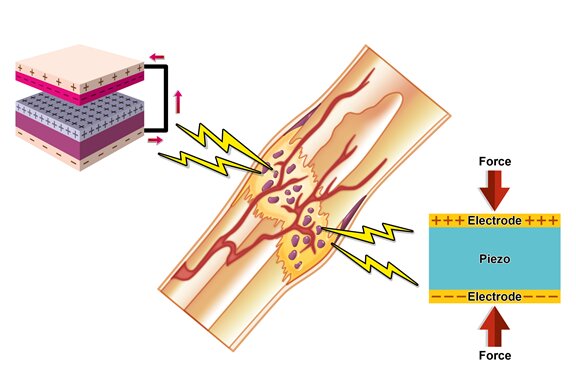
Breaking News
 They've Been Feeding You Poison (And Calling It Food)
They've Been Feeding You Poison (And Calling It Food)
 Tattoo ink may cause prolonged changes to the immune system
Tattoo ink may cause prolonged changes to the immune system
 Travel gadget promises to dry and iron your clothes – totally hands-free
Travel gadget promises to dry and iron your clothes – totally hands-free
 Duckweed: A sustainable, protein-packed food source smeared by Big Ag
Duckweed: A sustainable, protein-packed food source smeared by Big Ag
Top Tech News
 Perfect Aircrete, Kitchen Ingredients.
Perfect Aircrete, Kitchen Ingredients.
 Futuristic pixel-raising display lets you feel what's onscreen
Futuristic pixel-raising display lets you feel what's onscreen
 Cutting-Edge Facility Generates Pure Water and Hydrogen Fuel from Seawater for Mere Pennies
Cutting-Edge Facility Generates Pure Water and Hydrogen Fuel from Seawater for Mere Pennies
 This tiny dev board is packed with features for ambitious makers
This tiny dev board is packed with features for ambitious makers
 Scientists Discover Gel to Regrow Tooth Enamel
Scientists Discover Gel to Regrow Tooth Enamel
 Vitamin C and Dandelion Root Killing Cancer Cells -- as Former CDC Director Calls for COVID-19...
Vitamin C and Dandelion Root Killing Cancer Cells -- as Former CDC Director Calls for COVID-19...
 Galactic Brain: US firm plans space-based data centers, power grid to challenge China
Galactic Brain: US firm plans space-based data centers, power grid to challenge China
 A microbial cleanup for glyphosate just earned a patent. Here's why that matters
A microbial cleanup for glyphosate just earned a patent. Here's why that matters
 Japan Breaks Internet Speed Record with 5 Million Times Faster Data Transfer
Japan Breaks Internet Speed Record with 5 Million Times Faster Data Transfer
Piezoelectric "bone bandage" heals cracked bones faster

The novel "bone bandage" has wide-ranging potential applications for bone regeneration and regenerative medicine generally.
Piezoelectric materials generate an electric charge in response to applied mechanical stress. Bone is a piezoelectric material. Because it possesses an electrical microenvironment, electrical signals play an important role in the bone repair process, which can effectively promote bone regeneration. However, bone regeneration is a complex process that relies on mechanical, electrical, and biological components.
Current strategies for bone regeneration, such as grafts or scaffolds that release growth factors, have limitations, such as complications at the donor site, limited availability, and high cost. Now, researchers from the Korea Advanced Institute of Science and Technology (KAIST) have developed a pioneering approach to bone regeneration that combines piezoelectricity and a mineral that occurs naturally in bone.
Hydroxyapatite (HAp), a mineral in bones and teeth, plays a role in bone's structural strength and regeneration. It's commonly added to toothpaste to remineralize tooth enamel and fortify teeth. Studies have found that HAp enhances osteogenesis (bone formation) and provides a scaffold for new bone growth. It also has piezoelectric properties and a rough surface, making it an ideal candidate for creating scaffolds on which to grow bone.
So, the researchers fabricated a freestanding biomimetic scaffold, integrating HAp within the piezoelectric framework of polyvinylidene fluoride-co-trifluoro ethylene (P(VDF-TrFE)), a polymer film. The independent scaffold, which generates electrical signals when pressure is applied, sets this approach apart from previous research combining HAp and P(VDF-TrFE), which was limited to coatings on metallic prosthetics. The researchers' novel approach, they say, provides a versatile platform for bone regeneration beyond surface-bound applications.

 Advanced Propulsion Resources Part 1 of 2
Advanced Propulsion Resources Part 1 of 2

